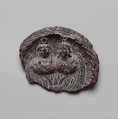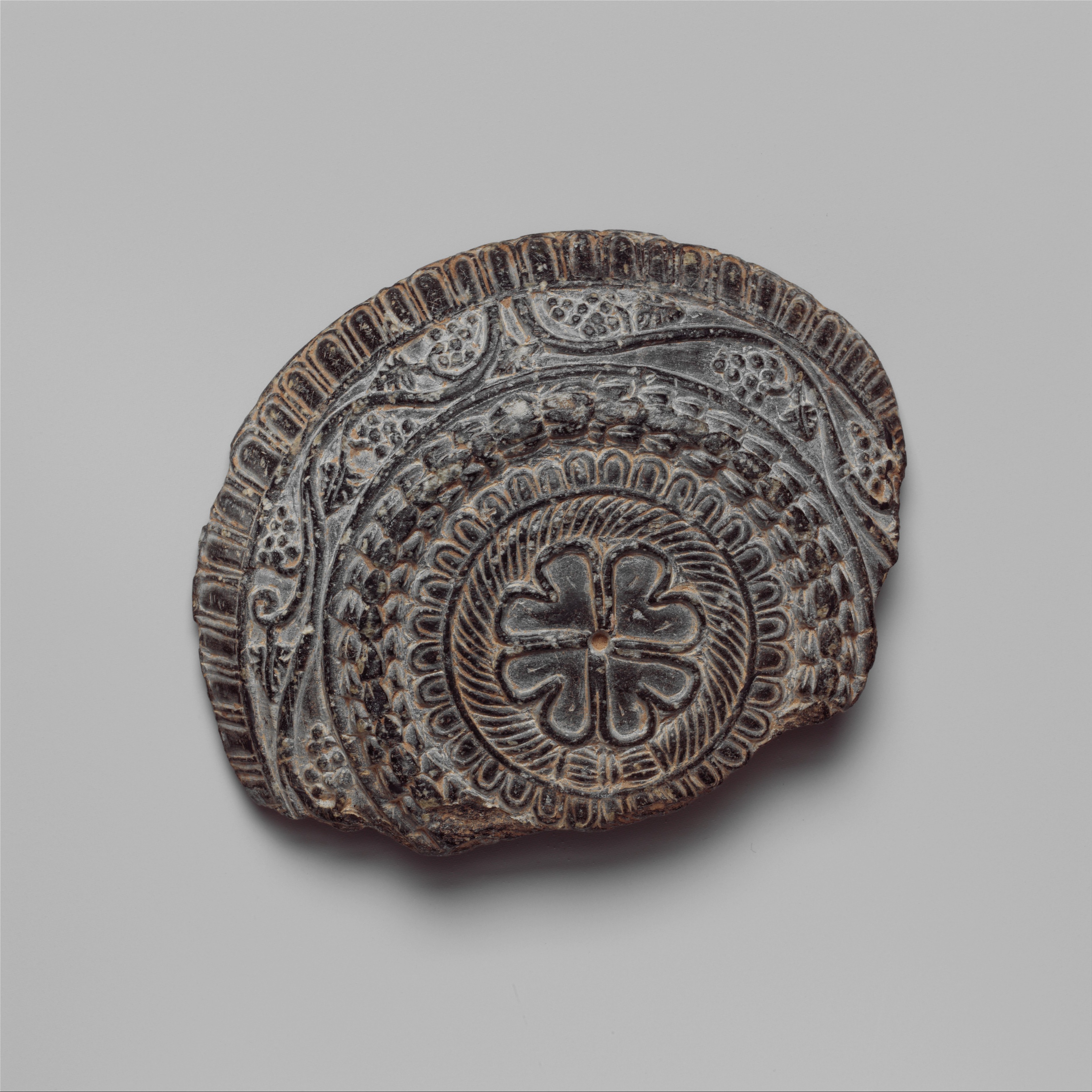Shallow dish with high relief figures of Isis and falcon-headed Horus
Roman Period
The interior of this shallow bowl is carved with the busts in high relief of a hawk-headed deity crowned with a sun disk and horns and a female figure, both resting on the petals of a lotus flower in low relief. The female may be Isis, identified by the knot in her garment, with Horus in his falcon rather than his child form. The space around the central device is fluted, and the rim is adorned with laurel wreaths whose tips meet above the heads of the figures. The exterior is ornamented with a four-petalled rosette surrounded by a rope pattern, laurel wreaths, and grape vines.
Small dishes of this type were particularly popular in Upper Egypt during the Roman period. There is little to assist in determining the date, but the feathered neck of the Horus figure suggests disintegration of pharaonic conventions for combining animal and human figures.
This image cannot be enlarged, viewed at full screen, or downloaded.
This artwork is meant to be viewed from right to left. Scroll left to view more.




